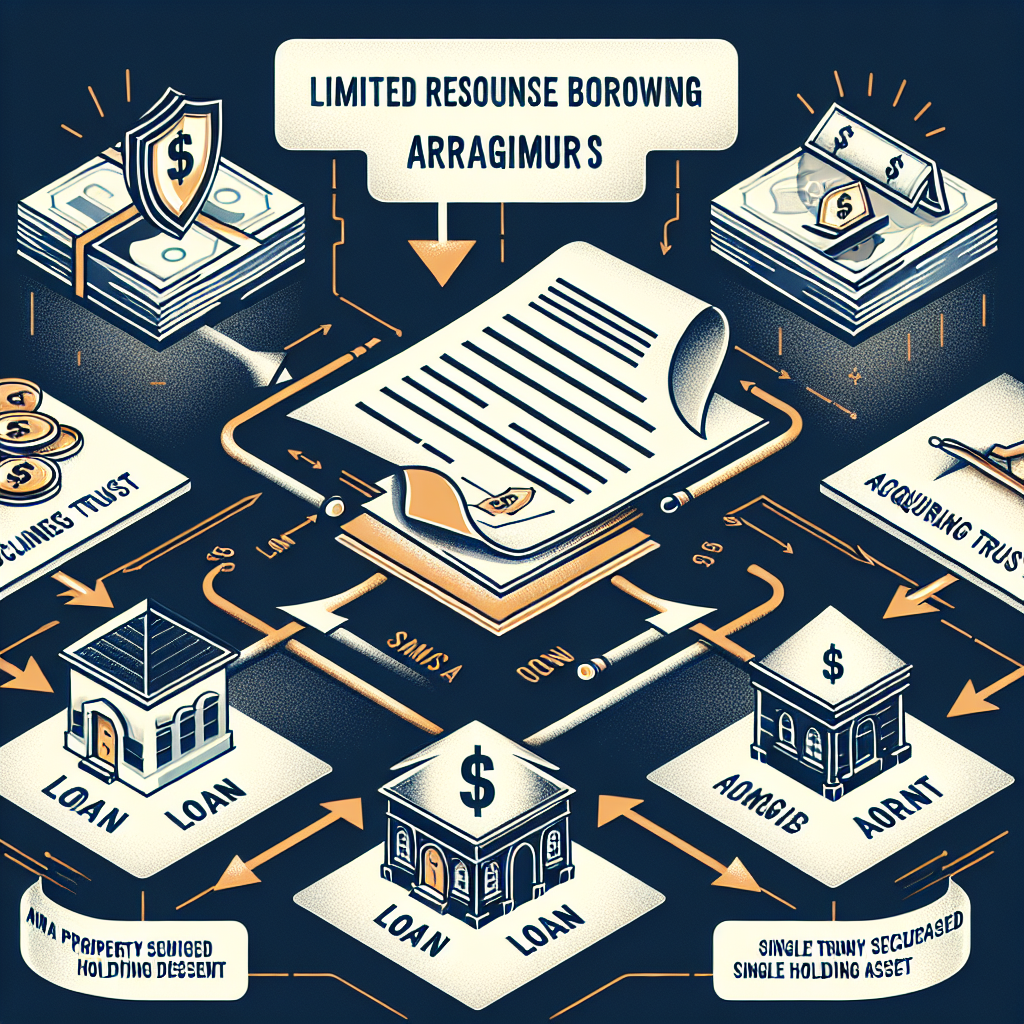In the realm of retirement planning, Self-Managed Super Funds (SMSFs) have emerged as powerful vehicles for Australians seeking greater control over their financial future. At the heart of this financial empowerment lies an often misunderstood mechanism – the Limited Recourse Borrowing Arrangement (LRBA). This specialized borrowing structure opens doors to property investment opportunities that would otherwise remain closed to many SMSF trustees.
For many investors, the prospect of leveraging their retirement savings to build wealth through property is appealing, yet the complexities of SMSF borrowing structure diagrams can seem overwhelming. These arrangements aren’t just financial tools; they’re pathways to potentially accelerated wealth creation when implemented correctly and responsibly.
Understanding SMSFs and LRBAs: The Foundation
Before diving into complex SMSF borrowing structures, it’s essential to understand the fundamental components that make these powerful investment vehicles possible.
A Self-Managed Super Fund represents a type of superannuation fund where members are also trustees, giving them direct control over investment decisions. Unlike industry or retail super funds, SMSFs put you in the driver’s seat of your retirement planning journey.
Limited Recourse Borrowing Arrangements emerged in 2007 (replacing the old instalment warrant arrangements) as a specific exception to the general prohibition on borrowing within superannuation. This carefully designed structure enables SMSFs to borrow funds for investment purposes, particularly for property acquisition, while maintaining compliance with superannuation regulations.
What makes LRBAs special is their “limited recourse” nature. This means that if the loan defaults, the lender’s access to recovery is limited to the specific asset purchased with the borrowed funds. Your other SMSF assets remain protected – a critical safeguard for your retirement savings.
The Australian Taxation Office (ATO) strictly regulates these arrangements to ensure they serve their intended purpose without exposing retirement savings to excessive risk. This regulatory framework provides both guidelines for compliance and protection for SMSF members.
The Anatomy of an SMSF Borrowing Structure Diagram
Fig 1: Visualization of a typical SMSF borrowing structure showing relationships between key entities
To truly grasp how an LRBA works, visualizing the SMSF borrowing structure diagram is essential. Let’s break down the key components:
1. The SMSF Trustee
At the foundation of the structure sits the SMSF trustee (either individual trustees or a corporate trustee), who makes the initial decision to purchase an asset using borrowed funds. The trustee is responsible for ensuring the arrangement aligns with the fund’s investment strategy and complies with all relevant regulations.
2. The Holding Trust (Bare Trust)
A separate trust, commonly called a bare trust or holding trust, must be established to hold the legal title of the purchased asset. This separation is crucial to the LRBA structure. The bare trustee holds the asset on behalf of the SMSF, which maintains the beneficial ownership.
“The holding trust arrangement is not merely a legal formality,” explains financial experts. “It’s a fundamental compliance requirement that protects the SMSF’s other assets from potential lender claims.”
3. The Lender
The lender provides the loan to the SMSF trustee. This can be a financial institution, a related party, or another entity. The loan must be properly documented with commercial terms, particularly if it’s a related-party loan.
4. The Asset
The LRBA must be used to purchase a “single acquirable asset” or a collection of identical assets with the same market value. Typically, this is a property, though it could be other assets like shares or managed funds under certain conditions.
5. Loan Repayments
The SMSF makes regular loan repayments using its cash flow, which may include rental income from the property, fund contributions, or other investment returns.
A properly constructed SMSF borrowing structure diagram visualizes these relationships clearly, showing how funds flow between entities and how the asset is legally held while beneficial ownership remains with the SMSF.
Setting Up an LRBA: Step-by-Step Guide
Following a methodical approach when establishing an LRBA ensures compliance with regulations while maximizing the benefits of your investment strategy.
Establishing an effective LRBA requires careful planning and execution. Here’s a practical roadmap to navigate this process:
Step 1: Review Your SMSF’s Trust Deed and Investment Strategy
Before proceeding, ensure your SMSF’s trust deed permits borrowing and that the intended investment aligns with your documented investment strategy. This foundational check prevents compliance issues down the track.
Step 2: Asset Selection
Identify a suitable asset that complies with LRBA requirements. Remember, the asset must be a single acquirable asset that the SMSF would be permitted to acquire directly. The asset cannot be acquired from a related party unless it’s business real property.
Property remains the most common asset acquired through LRBAs, with commercial properties offering potential advantages due to their typically higher yields and GST benefits for many SMSF investors.
Step 3: Establish the Bare Trust
Set up a separate bare trust to hold the legal title of the asset. This typically involves creating a trust deed and appointing a trustee (often a special purpose company). The SMSF must be the sole beneficiary of this trust.
The bare trust is sometimes referred to as a custodian trust, as its sole purpose is to hold the asset on behalf of the SMSF while the borrowing arrangement is in place.
Step 4: Secure Financing
Approach lenders to obtain loan approval. Be prepared for stricter lending criteria compared to personal loans, including potentially higher interest rates and lower loan-to-value ratios (typically 60-70%).
When seeking SMSF loans, working with specialists like Aries Financial Pty Ltd can provide access to tailored solutions that understand the unique requirements of SMSF lending.
Step 5: Contract and Settlement
The bare trustee signs the purchase contract, but it’s crucial that the contract clearly states that the bare trustee is acting on behalf of the SMSF. At settlement, the bare trustee becomes the legal owner while the SMSF maintains beneficial ownership.
Step 6: Ongoing Management and Compliance
Once established, the SMSF must make regular loan repayments and ensure the arrangement continues to comply with superannuation laws. This includes proper record-keeping, regular valuations, and ensuring any improvements to the property comply with LRBA restrictions.
“Maintaining meticulous records is not optional with LRBAs,” notes SMSF compliance experts. “The ATO scrutinizes these arrangements closely, and documentation gaps can lead to serious compliance issues.”
The Benefits of Using an SMSF Borrowing Structure Diagram
When implemented correctly, SMSF borrowing structures offer several strategic advantages that can significantly enhance your retirement wealth building capacity.
Understanding the SMSF borrowing structure diagram unlocks several powerful advantages for investors:
Increased Investment Capacity
LRBAs enable SMSFs to purchase higher-value assets than would be possible using only existing fund balances. This leverage can significantly expand your investment horizons and wealth-building potential.
A fund with $400,000 might only purchase a modest property outright. However, with an LRBA, the same fund could potentially acquire a property worth $800,000 or more, depending on lending criteria and deposit requirements.
Diversification Opportunities
By using borrowed funds for property acquisition, trustees can maintain cash reserves for other investments, creating a more diversified portfolio that spreads risk across different asset classes.
Potential Tax Benefits
SMSF property investments can offer tax advantages, including:
- Concessional 15% tax rate on rental income within the fund
- Potential for tax-free income and capital gains once members enter the pension phase
- Depreciation benefits that can reduce the fund’s taxable income
Capital Growth Potential
Property has historically delivered strong long-term capital growth in Australia. Leveraging through an LRBA allows investors to capture this growth on a larger asset base than would otherwise be possible.
“The power of an LRBA isn’t just in the immediate acquisition,” explains property investment specialists. “It’s in capturing growth on the entire asset value while only having deployed a portion of your capital.”
Navigating the Risks: Important Considerations
While LRBAs offer significant opportunities, prudent investors must carefully consider these potential challenges before proceeding.
While the SMSF borrowing structure diagram reveals significant opportunities, responsible trustees must also consider the potential challenges:
Cash Flow Management
Ensuring sufficient liquidity to meet loan repayments, particularly during vacancy periods or if interest rates rise, is crucial. Your SMSF must maintain adequate reserves to cover these obligations without compromising member benefits.
Concentration Risk
Investing a large portion of your SMSF in a single property creates concentration risk. Consider how this fits within your overall retirement strategy and diversification needs.
Regulatory Compliance
LRBAs are subject to strict regulatory requirements. Non-compliance can result in severe penalties, including the fund being deemed non-complying and taxed at the highest marginal rate.
“The ATO’s focus on SMSF compliance has intensified in recent years,” warn SMSF auditors. “Trustees must ensure their LRBA structures are established correctly and maintained properly to avoid costly penalties.”
Market Fluctuations
Property markets, like all investment markets, experience cycles. A downturn could impact both the asset’s value and rental returns, potentially creating challenges for loan servicing.
Costs and Complexity
Establishing and maintaining an LRBA involves costs including legal fees, loan establishment fees, and potentially higher interest rates. These must be factored into your investment calculations.
Making Informed Decisions: The Value of Expert Guidance
The complexity of SMSF borrowing structure diagrams underscores the importance of working with specialists who understand these arrangements intimately. At Aries Financial Pty Ltd, Australia’s Trusted SMSF Lending Specialist, we’ve guided countless trustees through this process with integrity and expertise.
Our approach focuses on education first – ensuring you fully understand the SMSF borrowing structure diagram before making significant decisions. This empowerment through knowledge aligns perfectly with our core philosophy of integrity, expertise, and client empowerment.
“The most successful SMSF property investors are those who take the time to truly understand the structure before proceeding,” notes SMSF lending specialists. “A clear visualization of the arrangement through an SMSF borrowing structure diagram is often the turning point in this understanding.”
Conclusion: Your Roadmap to Financial Freedom
The SMSF borrowing structure diagram isn’t just a technical illustration – it’s a roadmap to potential financial freedom through strategic property investment. By understanding each component and how they interact, trustees gain confidence in navigating these powerful but complex arrangements.
For SMSF trustees, property investors, financial advisors, and business owners exploring retirement wealth strategies, mastering the LRBA structure opens doors to investment opportunities that might otherwise remain out of reach.
As you consider whether an LRBA might be right for your SMSF, remember that the strongest financial decisions come from a foundation of knowledge, careful planning, and expert guidance. The diagram may seem complex at first glance, but with the right support, it becomes a clear path toward your financial goals.
In a landscape where financial security and independence are increasingly self-directed, understanding tools like the SMSF borrowing structure diagram isn’t just beneficial – it’s essential for those seeking to maximize their retirement potential through property investment.


